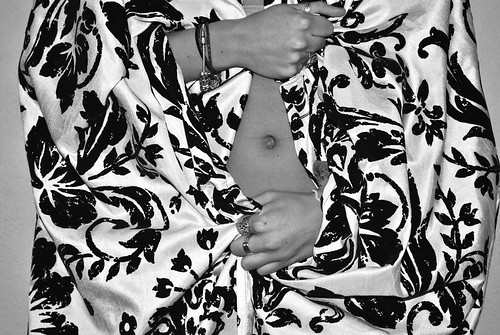Margrethe Mather, born as Emma Caroline Youngren, was born March 4, 1886. It is unsure as to where she grew up. Her fame was often intertwined with the fame of American photographer Edward Weston. The two collaborated on many photographs. Mather was a prostitute as a child, and was bisexual. Her work in photography helped shift photography to be considered more as modern art. Her work is often considered experimental with her use of light and form.
She did a lot of work with taking real-life images and making them into patterns.
She did a lot of work with taking real-life images and making them into patterns.
For this particular photograph, Billy Justema in Man's Summer Kimono, she took a male figure and feminized his body. She made the human body appear very geometric; the hands a shaped circularly similar to the patterns in the fabric, while the skin appears in triangular patterns. It seems that her intent is to feminize the masculine and show to expose the body. The subject is dressed in an over-sized yet appears bare. The composition is emphasizes the belly-button as the center of the body. The belly button appears serene in the middle of chaos.
I really enjoy this photograph. The pattern in the fabric adds a twist to the common body-form and I love how the body is concealed, yet completely exposed.
In my twist on the original photograph, I switched the gender of the subject. Instead of feminizing the male, I wanted to masculine-ize the female. In the original, it appears as thought the subject is willing to bare his skin. In my twist, I wanted my subject to appear uneasy and violated. The feminism streams throughout my photo (the rings and bracelets) yet her grip on the cloth is firmly masculine. I did almost the exact composition, but changed the attitude of the photograph by changing the body structure of the subjects hands. My subjects stomach is barely exposed, yet you can still see the belly-button peaking through, which adds the centering aspect to the photograph.


No comments:
Post a Comment